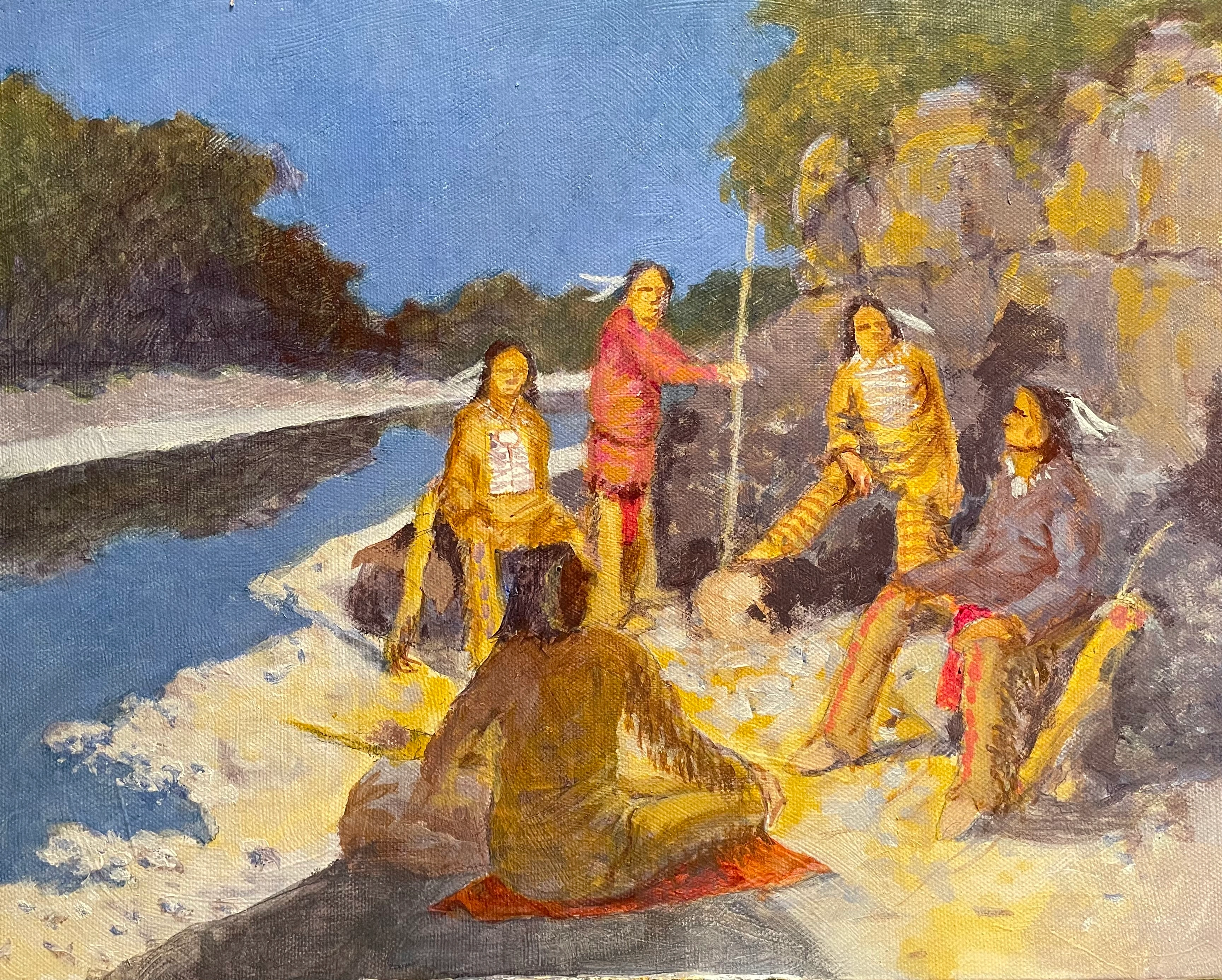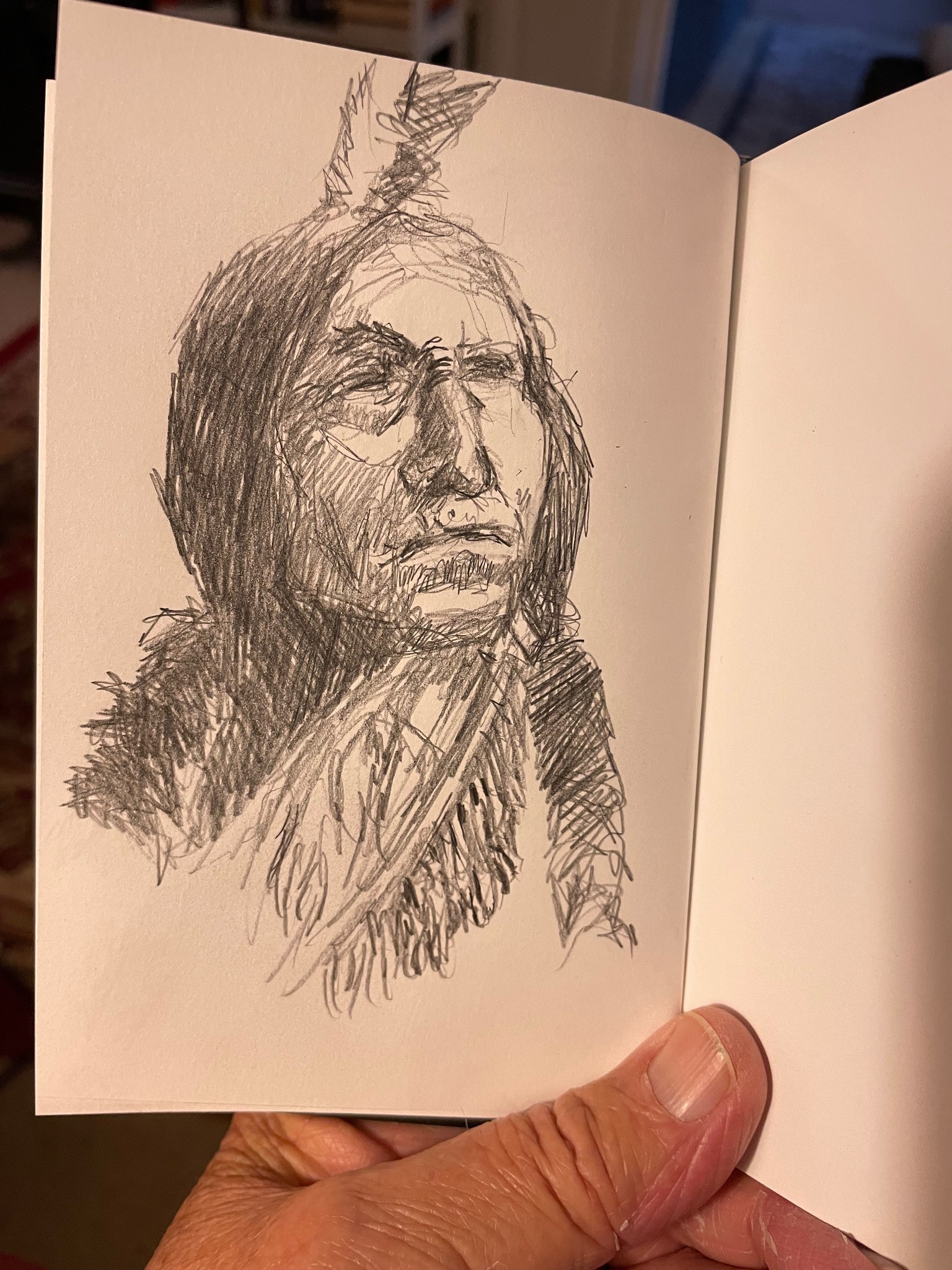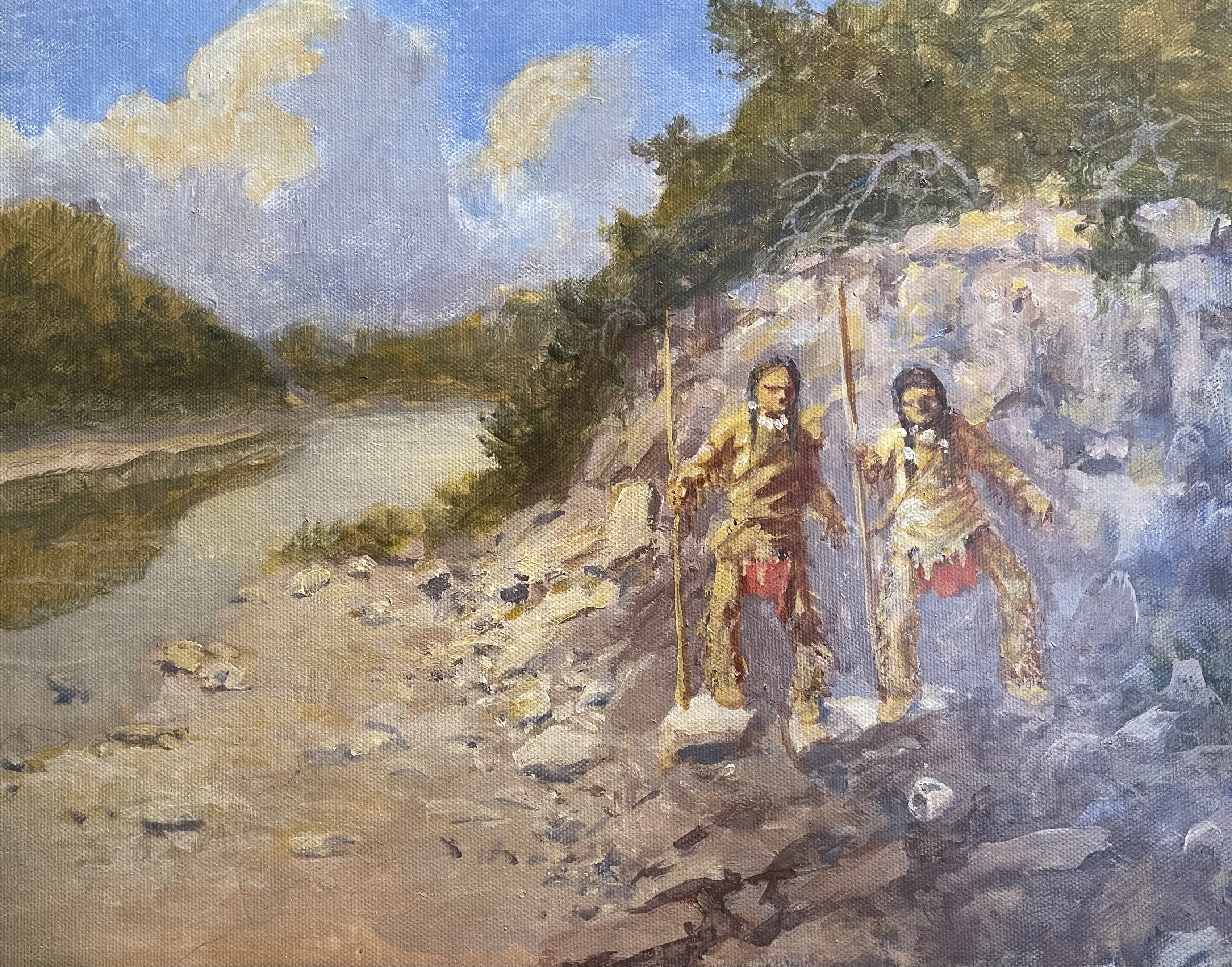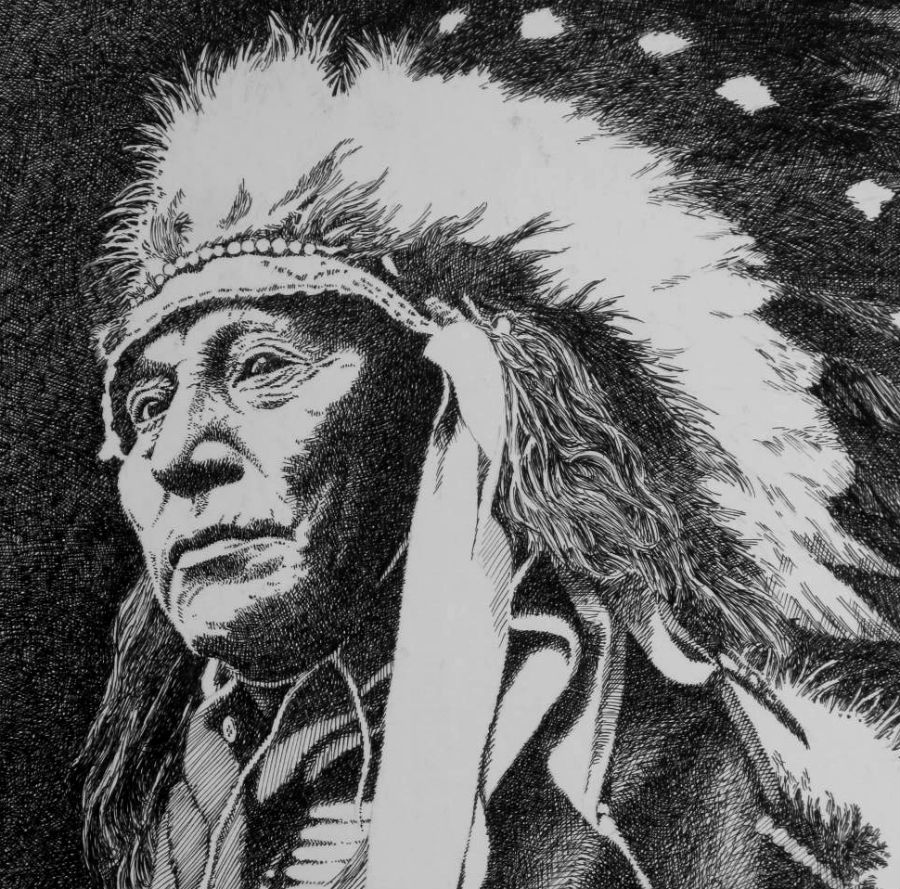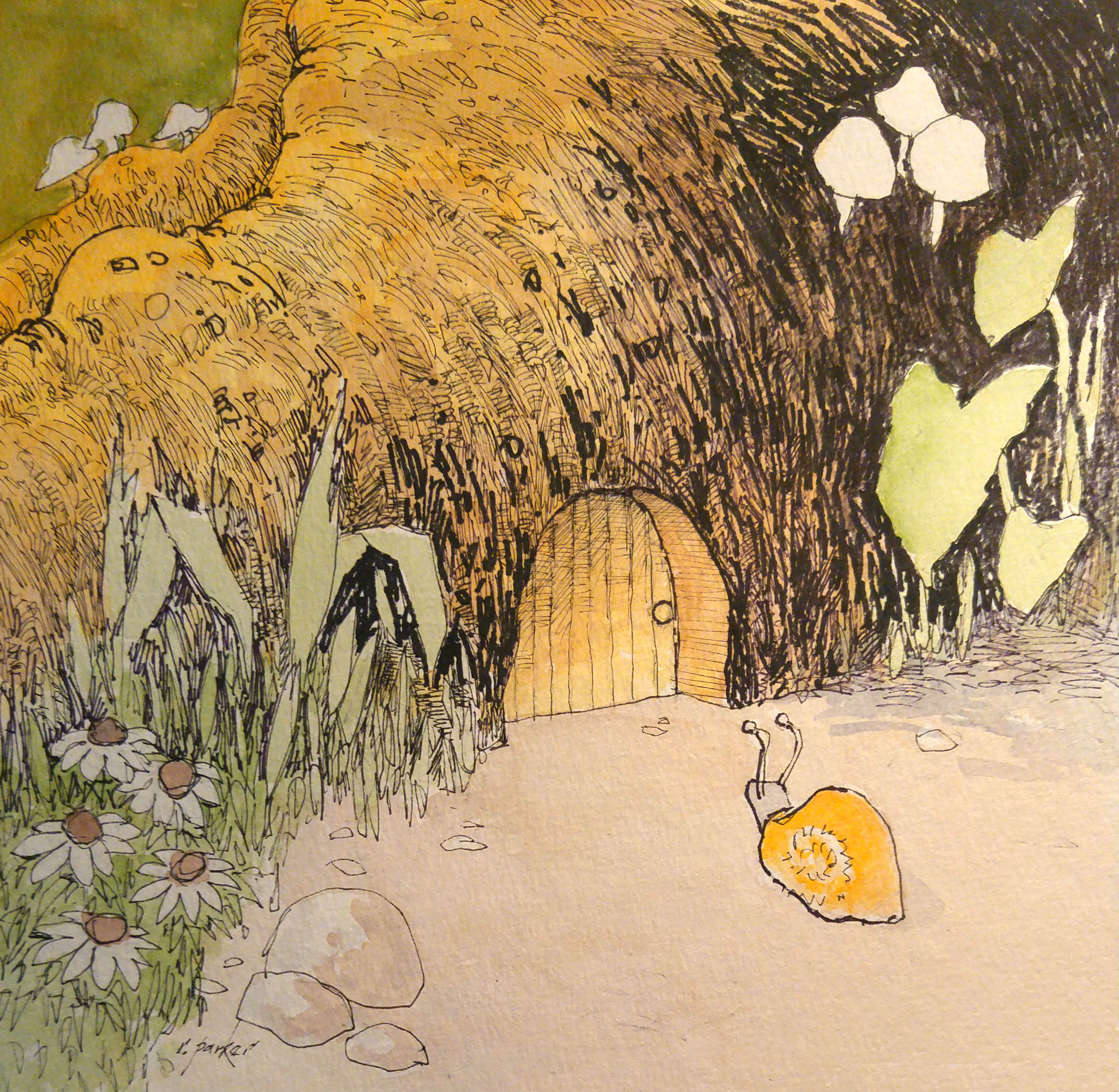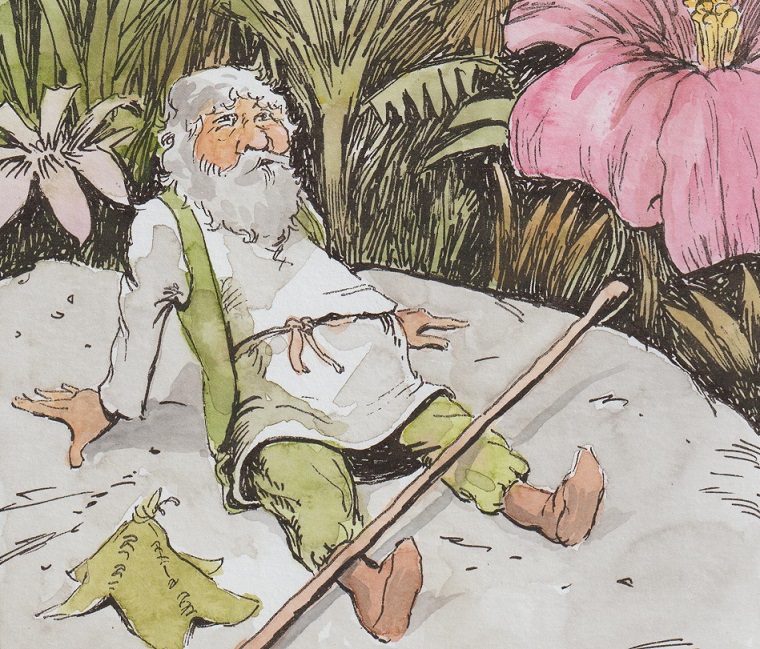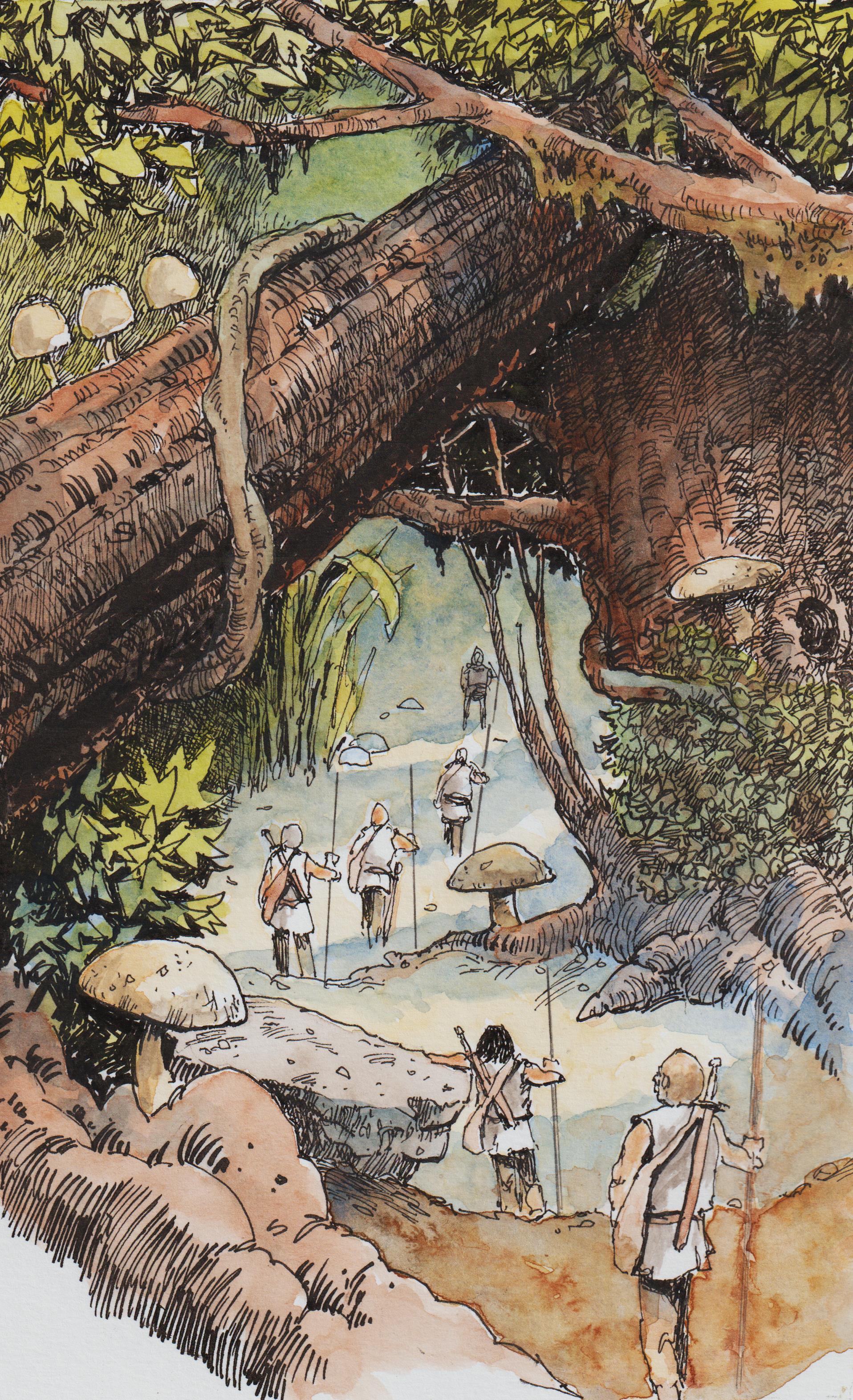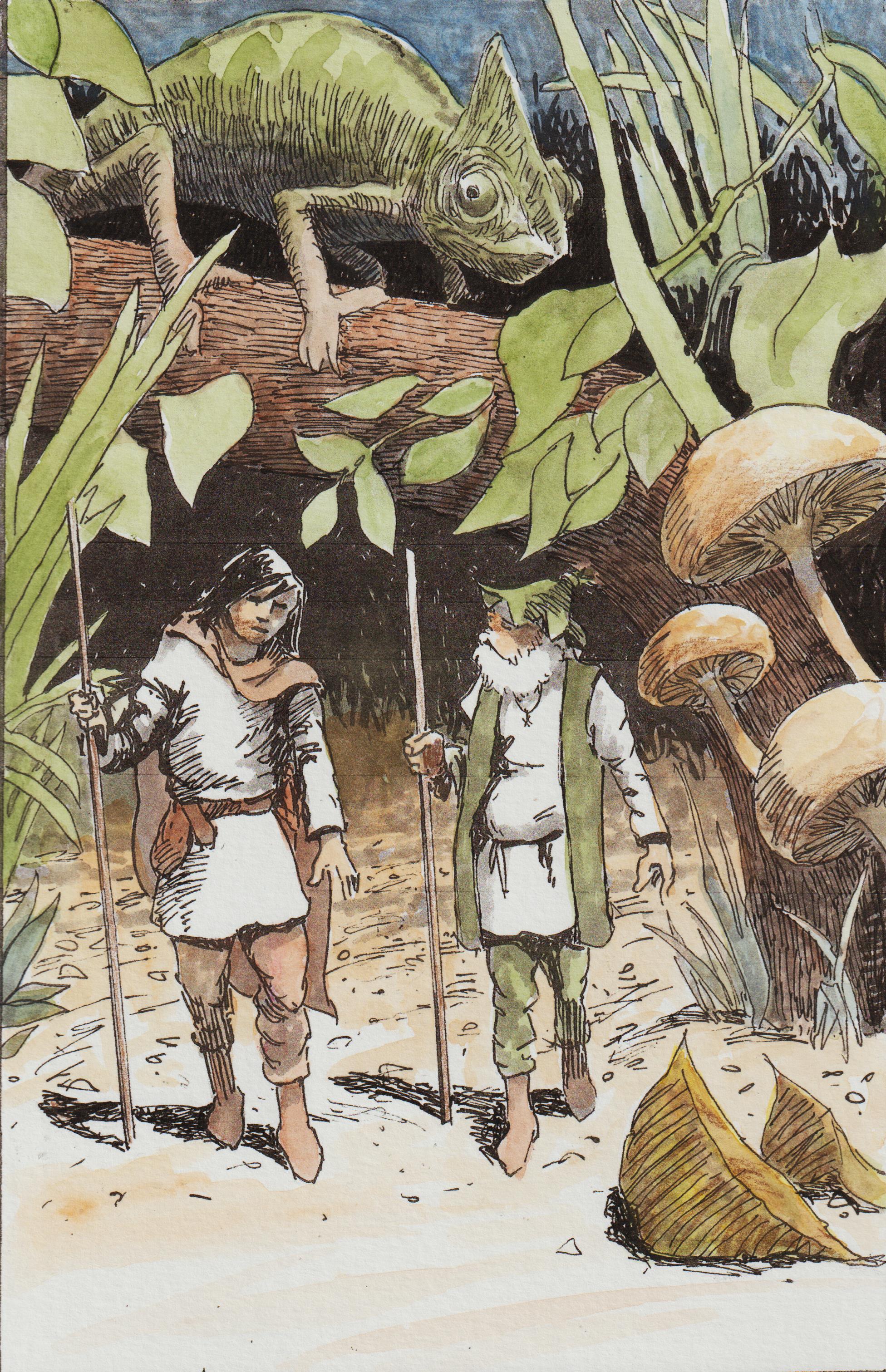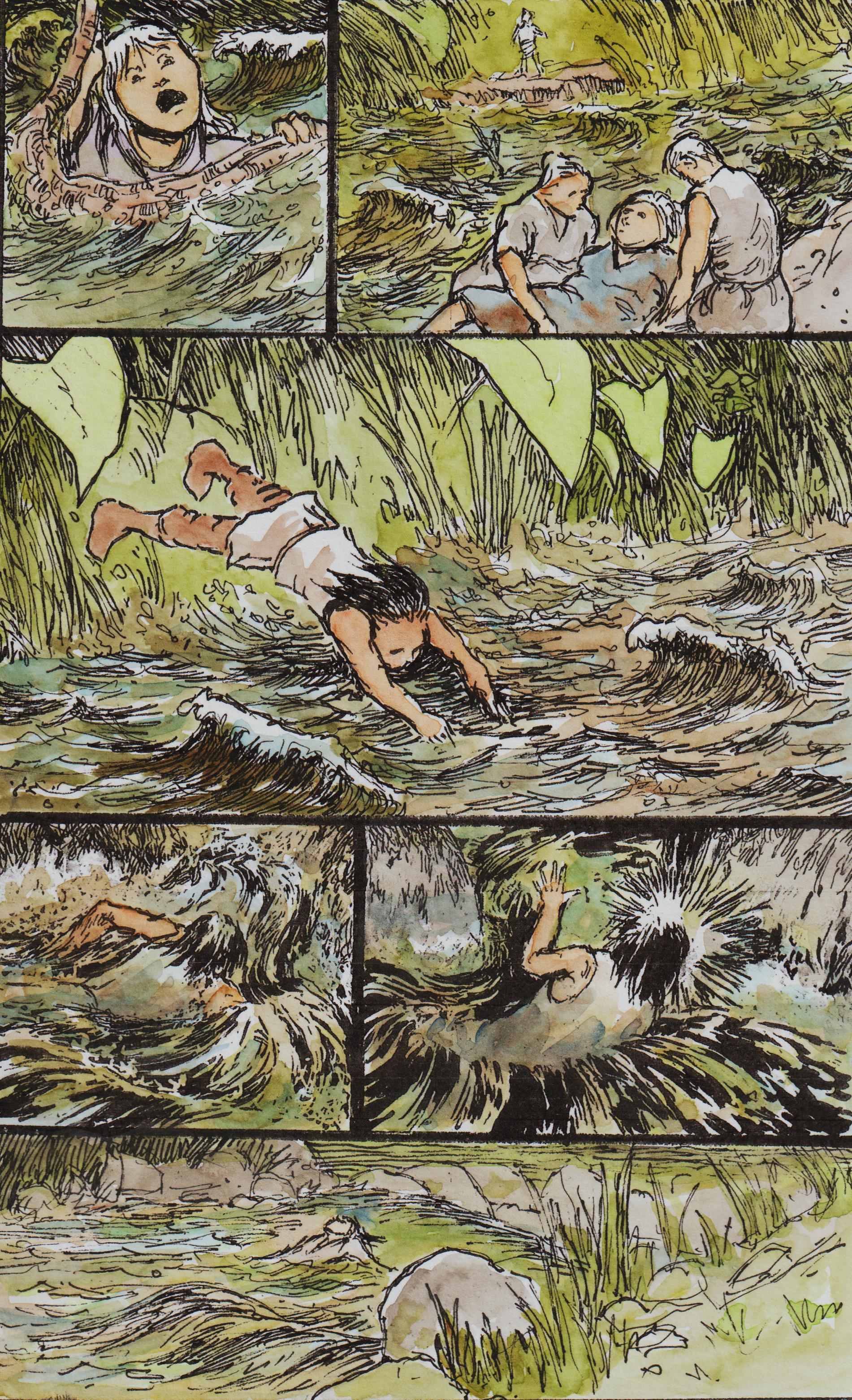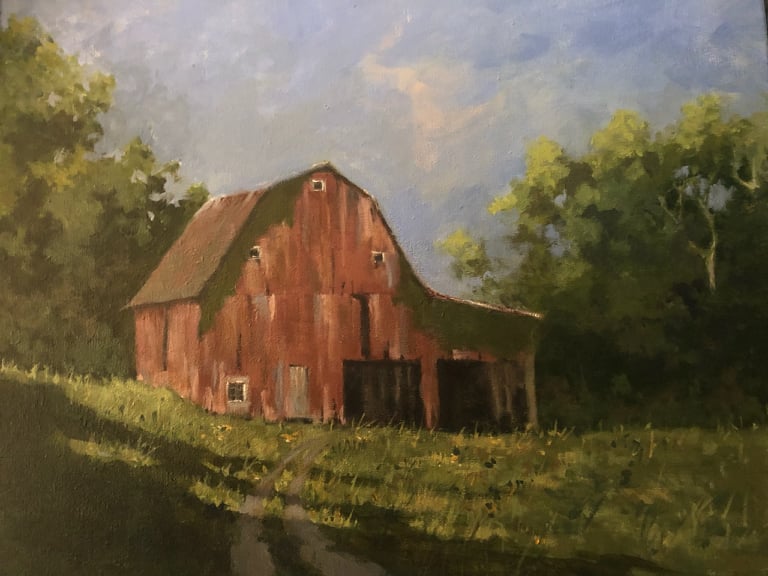Planning Tomorrow
This is a work in progress. It’s a struggle. I know what I want it to look like. It’s close, and I think it’s simply a case of taking my time and working a little at a time. But to keep the blog alive with art, I’m posting it and will let it sit for a while.
And here’s a little sketchbook piece, a pencil sketch from an Edward Curtis photograph.
The Tin Cup
I figure Native Americans were not the only ones who passed this way, following the river. There would have been flat land explorers, the equivalent of mountain men, at least in the later years. The discovery of a tin cup would have given away their passage and raised questions. Who did it belong to? How long ago did they pass this way and which way were they going? Why would such a valuable item be left behind? Were they running? Surprised by someone or something? And how many of them were there?
The Tin Cup, 9″x12″, Acrylic (I apologize for the quality of the image. )
In producing these little moments in time, I’ve taken some artistic liberties, of course. The river is an interpretation of what I can see in the short distance accessible to me. And since there are not likely to be many photographs of the area from that period of time, I’m painting a current version. In traveling Texas, and other parts of the country as well, I often look at the countryside and wonder what did it look like in the days of the pioneers, in the time of the buffalo and far-ranging Native American tribes? Were those trees really there back then, or were they just low foliage? I have to use my imagination and try to create an interesting view with what I can see.
In my last post, I said I would include sketches from time to time. Here are a couple for now. I’m obviously still experimenting with portraying people with paint and brushes. Painting them at a relatively small size presents an additional challege.
There is another aspect to this and that is the clothing – or lack of it. My research indicates that the early Native Americans wore a variety of clothing, and sometimes they wore very little. Edward S. Curtis was perhaps the most prolific photographer of Native Americans. The problem for me is that he mostly showed them in ceremonial clothing, “dressed up” if you will. Western artist Charles Russell showed a more “native” version and I’ll probably spend a little more time with his paintings and drawings because he was closer to his subject. I’ll also be looking at Frederick Remington’s work, keeping in mind that he sometimes romanticized his version of those early days. Howard Terpning is a more recent source for Native American images. He produced so many paintings that it’s hard to avoid copying his work. I am striving to sketch and draw my own figures while using these resources for clothing and weapons.
There’s more to come. I have two new acrylic paintings in progress.
Thanks for sticking with me.
Back to Brushes
Painting With A Purpose
We live within about a three minute walk from the North San Gabriel River. Also a short walk from where we live is an old cemetery. I’ve never seen it because it is on private land and blocked off by a high game fence. But others with knowledge of the area have told me the cemetery is there, and it shows up on Google. Historically, it is known as Anderson Cemetery or Rock House Cemetery. The Texas State Historical Society describes the area this way:
Rock House is on Farm Road 3405 and the North San Gabriel River, three miles northeast of Liberty Hill, in western Williamson County. Draco, the Indian name for the village that occupied the site before white settlement, means “favorite place.” Dates on cemetery graves indicate that settlement began before 1871, but the site became a distinct community about 1878. The name Rock House is from a Baptist tabernacle constructed of rock before 1878 by early settlers, and the names Draco and Rock House seem to have been used interchangeably into the 1890s. The Rock House School also existed by 1878, when it was designated a tax collection point for the area; a political meeting was held there that year, apparently to organize support for prohibition in the local option vote. By 1890 the community had a store, and a post office with the name Draco operated from 1890 to 1892. a cotton gin operated on a farm just across the river. The Rock House School was one of the larger rural schools in Williamson County in the early decades of the twentieth century. In 1903 it had ninety-six pupils and two teachers, and in 1922 a new two-classroom school served seventy-four students. The school was consolidated with the Liberty Hill school in 1947. A Texas historical marker honoring the community was erected in 1981. Rock House remained a dispersed farming community in 2000. No population estimates were available. The main landmark was the Rock House Cemetery.
That’s a long description, but it’s notable that all that remains is a hidden away cemetery, a few lumps of concrete that were once part of some structure foundations, and an old barn/shed that is about to fall down. I used to wonder about some of the concrete foundations when I took morning walks, some of which were removed when an RV park was built at the bend in County Road 256.
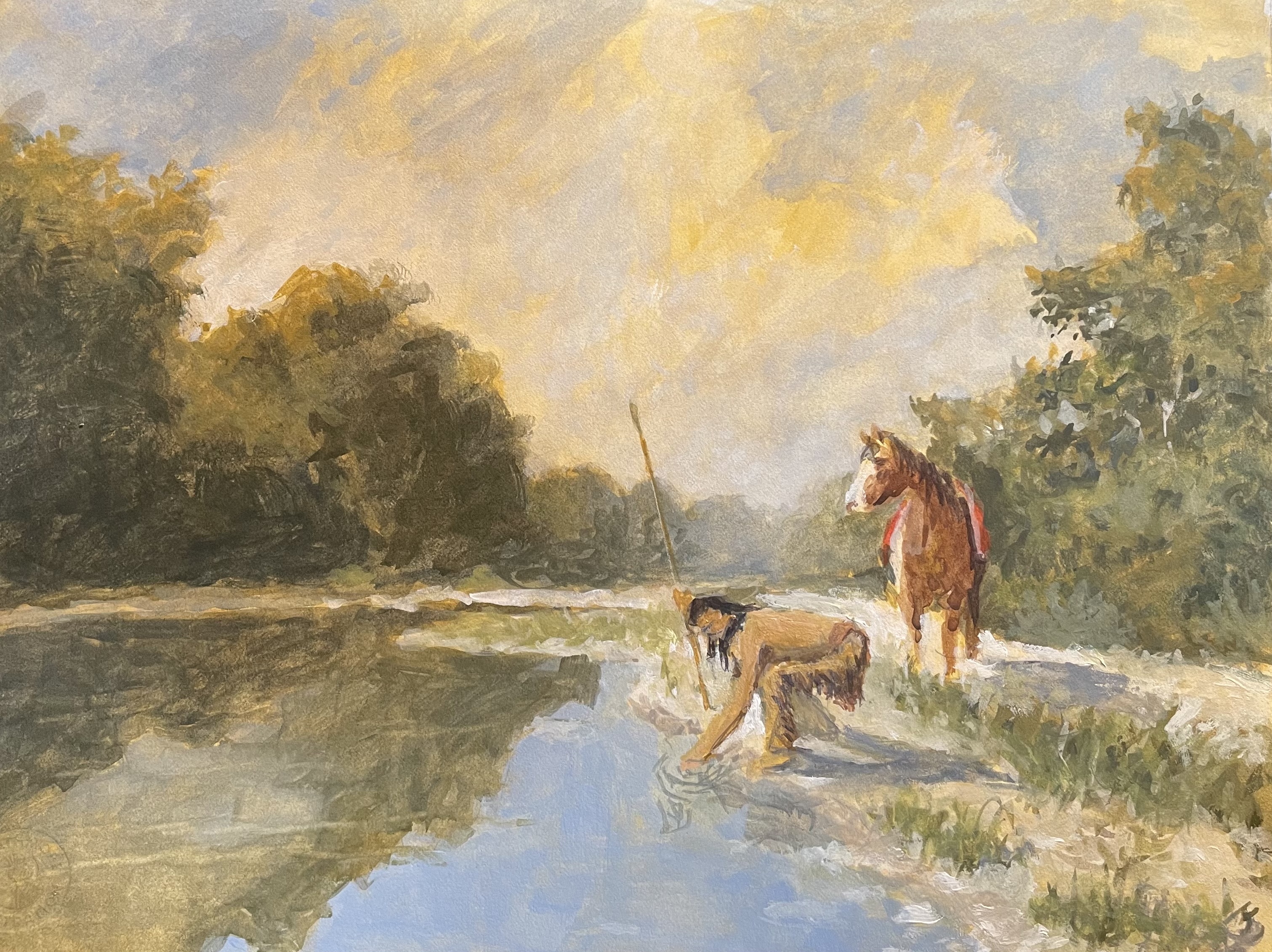
Native Americans often followed the rivers and the San Gabriel was no exception. Before the white settlers, many Native Americans passed through the area, settling for short periods near the banks of the North San Gabriel. The earliest and largest group was the Tonkawas, who were ultimately pushed out by the Lipan-Apaches and Comanches, as well as the eventual loss of the buffalo in Texas.
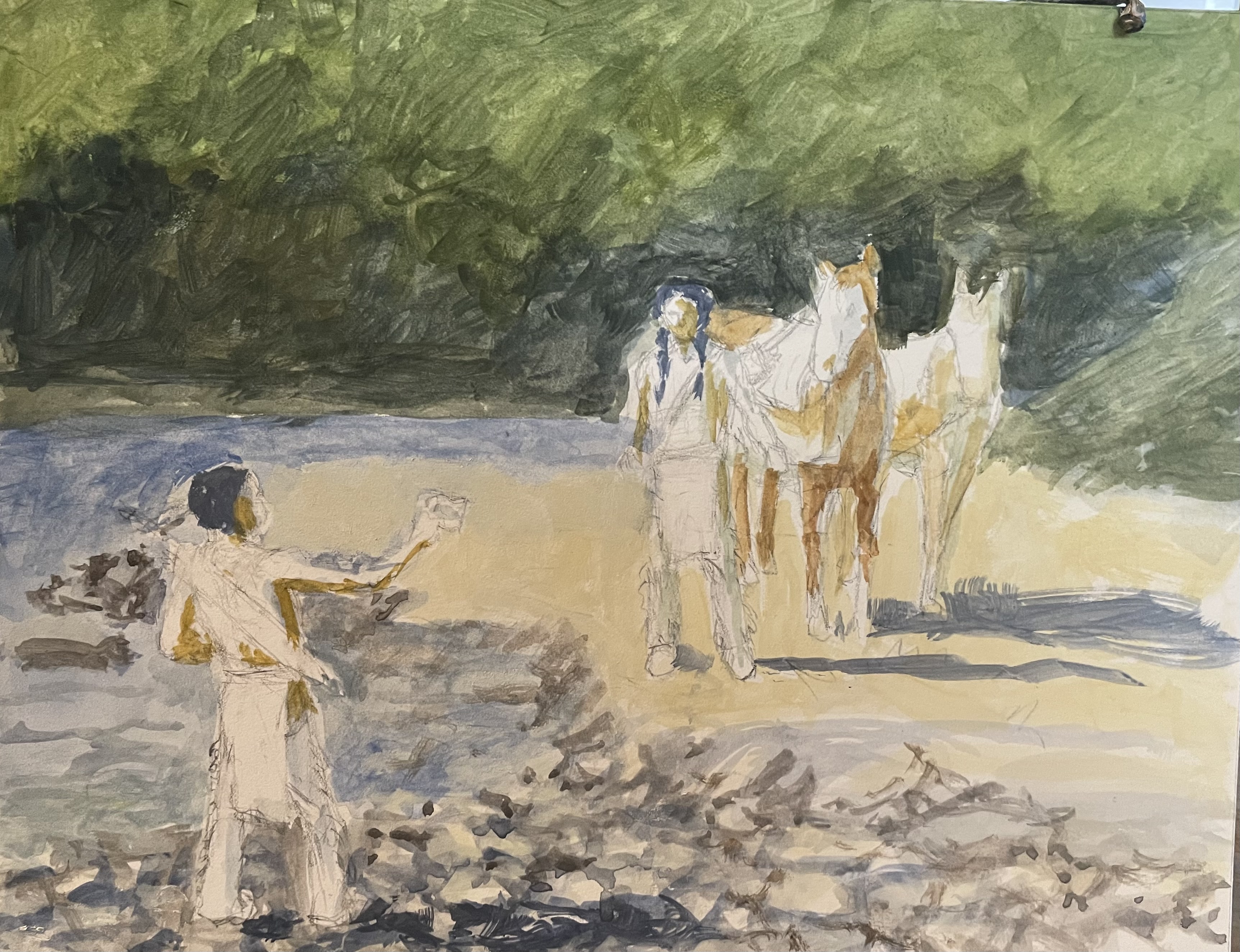
As you can see, I’m painting again. We’ll see if a guy can virtually stop painting for several years and then pick up brushes again at age 80 and do anything worthwhile. The medium is still gouache, although I may try acrylics as well. The subject of this long post is the subject I want to pursue: the Native Americans who lived and passed through this area. When we moved here, the river was a strong draw for us, and I have painted it. Now I want to speculate about the people who walked the river, looking for game, being wary of enemies, and finding signs of the white man.
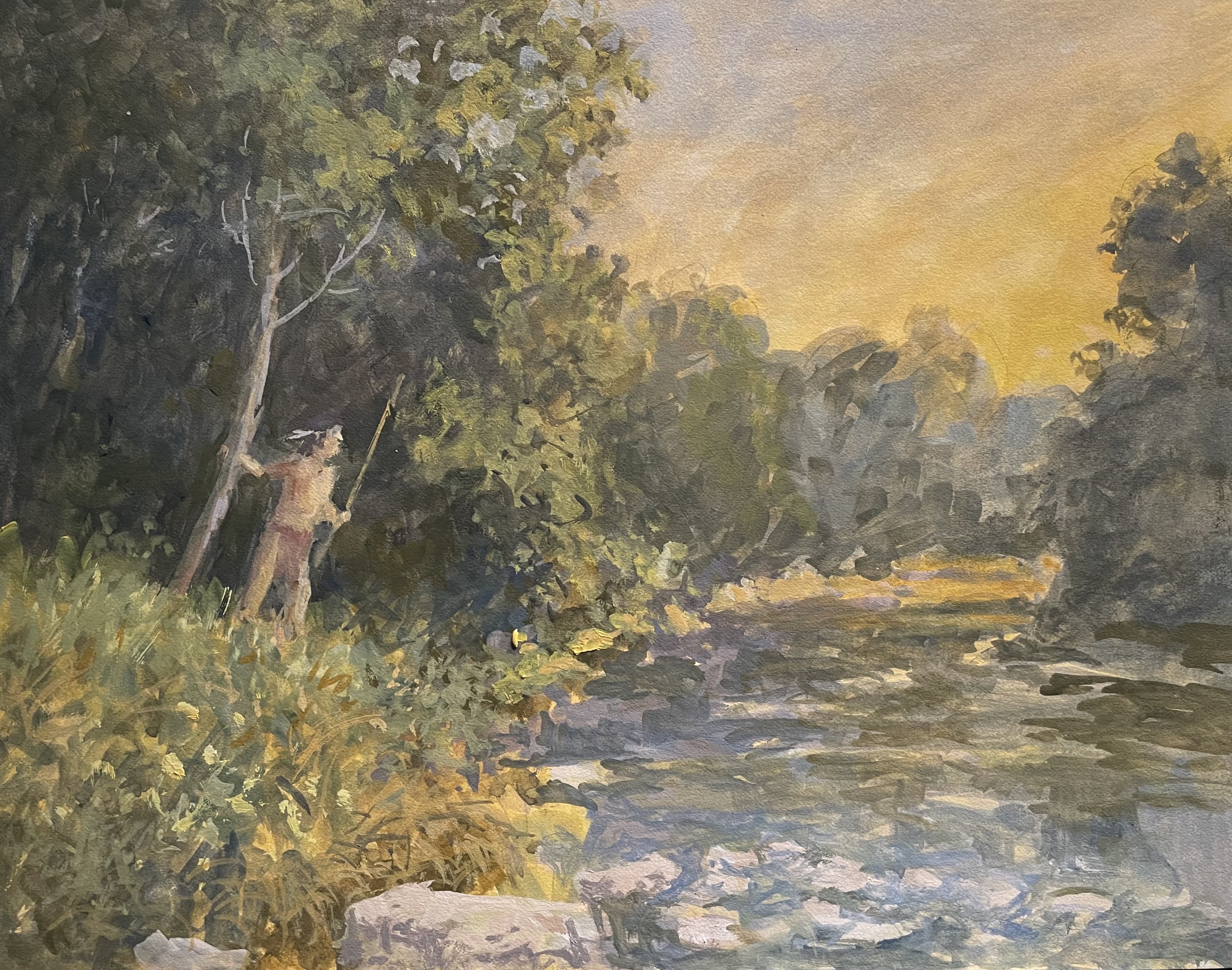
All these paintings are still in progress. People and animals have not been part of my repertoire in the past, so in addition to getting my touch back, there are a lot of sketches and studies in my immediate future. I’ll share some of them as well.
Looks like I’m back.
Pen & Ink
Sherwin
…from Finding Katya…
FINDING KATYA…finally!
After four long years of starts and stops, indecision, changes of direction, and a whole new learning curve, Finding Katya is finally finished and published.
https://www.blurb.com/b/11726298-finding-katya
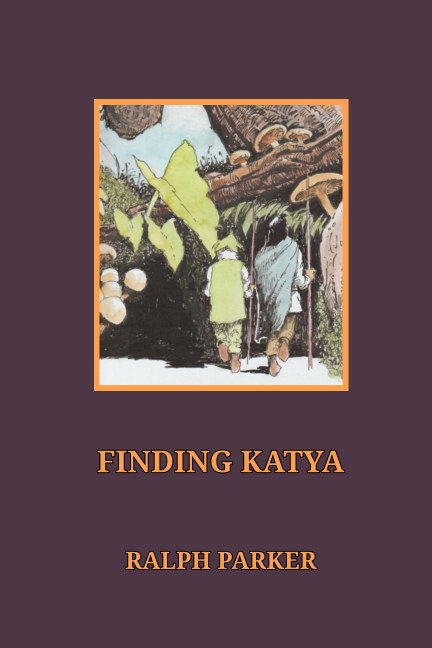
Finding Katya… Book Update
Book Report… Finding Katya
Yes, I’m still here, and yes, the graphic novel Finding Katya is still in the works, but it’s very, very close to being published. It’s taken four years to get to this point. Yes, I said four years. That’s because I knew nothing when I started, made a lot of false starts and mistakes, and then made more false starts and mistakes. But I’m almost there.
I will never be a Marvel comics artist. And at 79, I don’t have time to become one. My Art Bucket List has included some kind of sequential art publication for many years, long before I knew it was called sequential art. I really just wanted to tell stories with pictures and I loved comic books as a kid. This was a way to scratch that itch.
The book, 140 pages, will be self-published. The art is primarily ink and watercolor, with some gouache in places. If I have to select a genre, I suppose Finding Katya is a fantasy/coming of age story, set in medieval times. Shown here is just the artwork. Speech bubbles and captions are added digitally.
For those who don’t remember, Nell and I are RV dwellers, living in our 36 foot fifth wheel. I mention that to explain that my creative pursuits are pursued in the little space pictured above.
We are reviewing the book and I’m redrawing several pages at present. Updates when there’s more news.
Done. Two new acrylic paintings
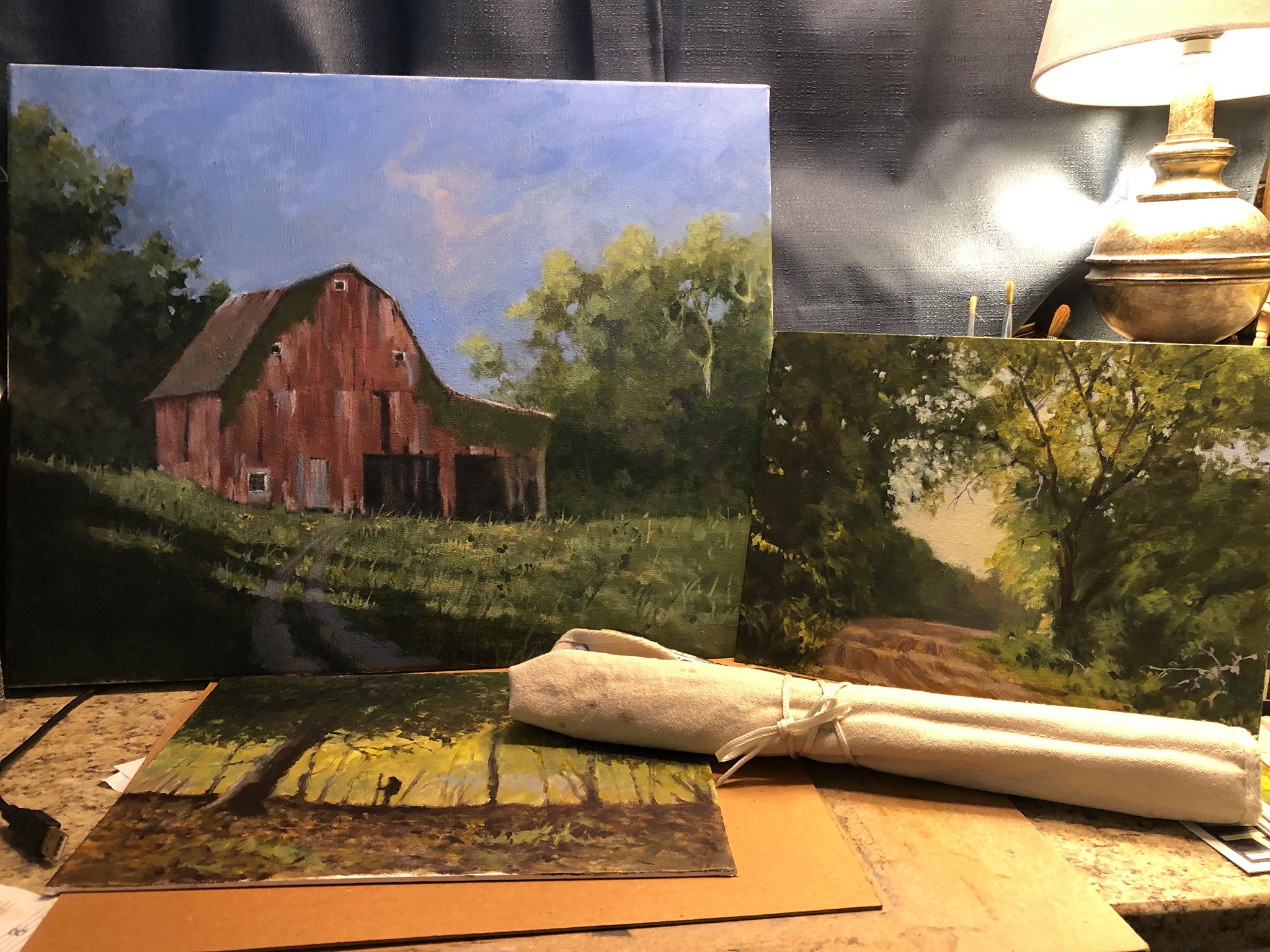
Like most artists, I love drawing and painting old barns. This one was new to us, located somewhere near Mount Vernon, Ohio.
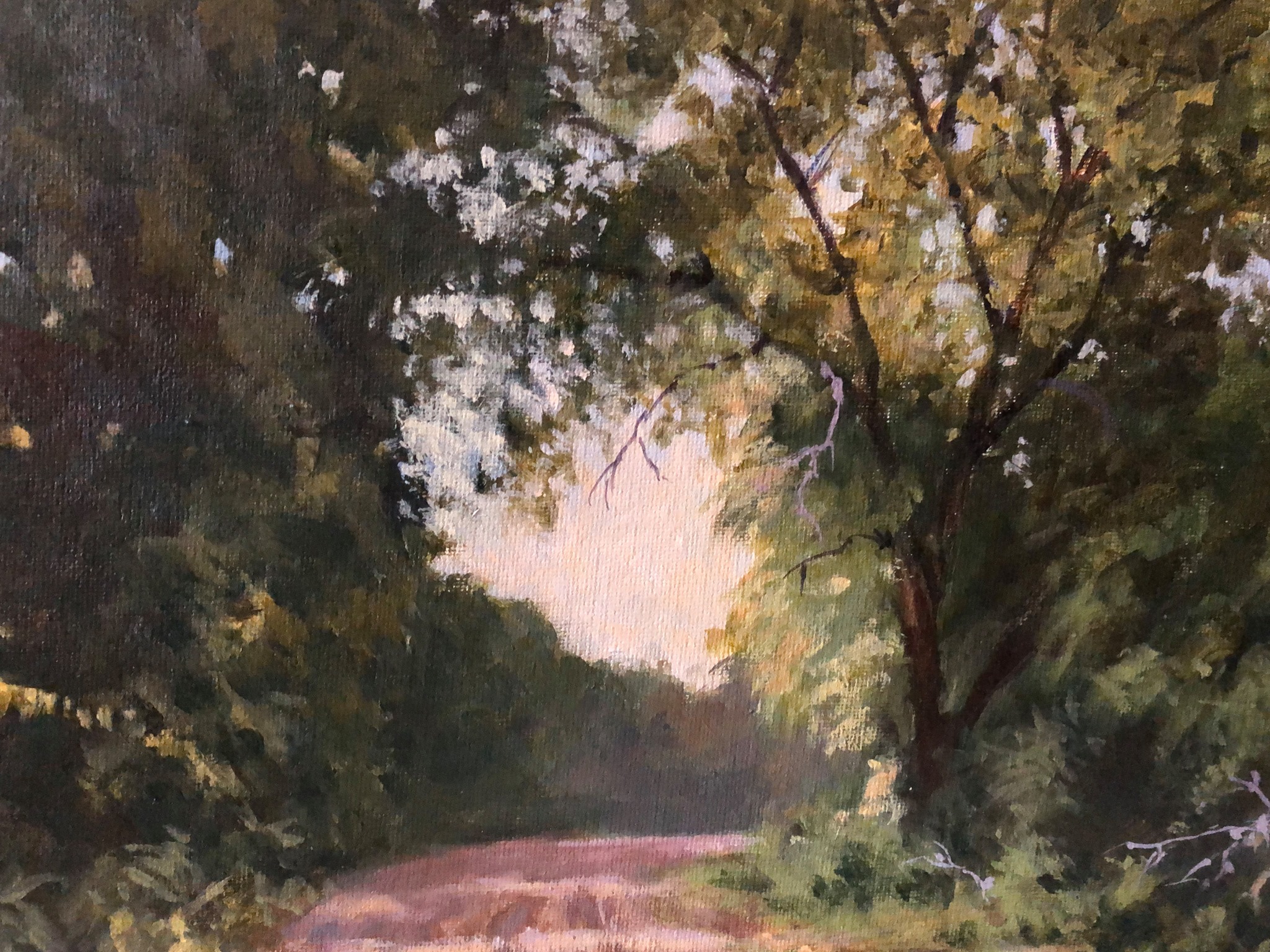
This is about a five minute walk from our home. It is a paved country road, but I took the liberty of turning it into dirt. I struggled with this one, and found my self studying a few of my favorite 19th century landscape painters (like Corot) and the Hudson River painters, including the modern day master Erik Koeppel. Not that I’m in the same universe as those guys, but one should always aspire to improve.
This was a nice break from the graphic novel work It was also reassuring that I can still mix paint and use a brush.
